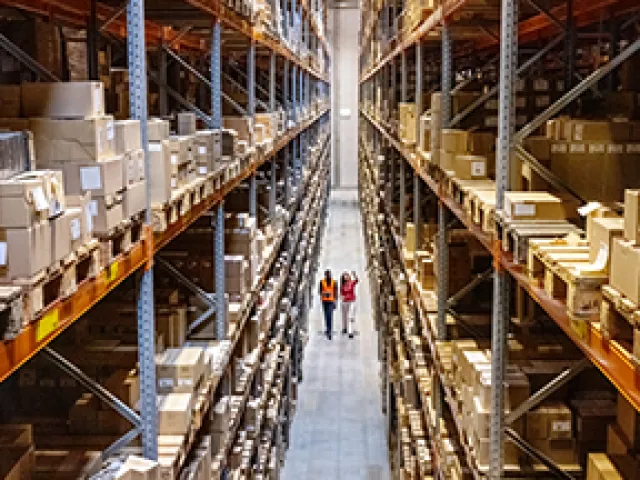Table of contents

AI is helping Santen Pharmaceutical tackle complex serialization and traceability challenges, says Pasi Kemppainen, the company's Head of Global Serialization, Traceability, and Digital Strategy. Leveraging an AI tool called Chat AIRI, Santen is gaining new insights to improve compliance and communication across the organization. Kemppainen recommends starting small with AI and experimenting to discover its potential value in the life sciences industry.
The TraceLink Global Compliance Platform is also helping Santen simplify regulatory management and build a scalable strategy for growth. With one trusted platform, Santen can streamline compliance across regions, reduce complexity, and keep pace with changing requirements. Watch this video for more details.
Video Highlights:
- 00:32 - What are the ongoing challenges in serialization and traceability management that AI could help resolve?
- 01:34 - What practical steps can life sciences manufacturers take to begin realizing the value of new technologies like AI?
- 02:34 - What is Chat AIRI and how are you leveraging it at Santen?
- 04:08 - What are the benefits of using a global compliance platform like TraceLink over individual country-specific solutions?
- 05:18 - What has your experience been working with the TraceLink team?
TRANSCRIPT
TRANSCRIPT
My name is Pasi Kemppainen. I'm the Head of Santen Pharmaceutical's Global Serialization, Traceability, and Digital Strategy Team. My responsibility at Santen is to make sure that all our products, including pharmaceuticals and medical devices, are distributed throughout the global markets according to the compliance and regulatory requirements, up to the patients.
The biggest and ongoing challenges are the amount of the regulations we have in place and also that they are changing.
Where we are operating globally, we not only need to look at the regulations on a national level, but also from a global implementation point of view, so that we are not ending up implementing the regulatory requirements in silos. But we are using platforms like TraceLink, where we have the one standardized way of implementing compliance and then delivering the goods to the market.
Additionally, then using new tools like artificial intelligence, we get down to the insights quicker and better, and that provides us the ability to be agile and more productive when it comes to the decision making. How are we going to implement the market? What products are the regulations impacting? And what is the best way to actually implement the regulatory requirements based on the insights we get using AI and other tools?
The best way to start realizing the value of new technology is experimentation. So, if you only rely on what you read and hear, you make your assumptions easily about the technology, how that could help you, and how you should implement it.
But the best way is really to start experimenting small because nowadays the technologies are cheap or even free to use, and it only takes time and a little bit of effort to get things started, and you gradually learn by doing and then you get down to understanding: What is the real benefit? What are the potential use cases? And also, how far is this technology actually from the promise that the technology has?
So, I would really encourage the companies and the teams to do experimentations, pilots, proof of concepts, just to learn the technology and get an understanding of the potential, and also the risks with the technologies and new tools.
Chat AIRI is our proof of concept for getting insights for implementing the regulatory requirements for different markets. Now, we are focusing only on the Falsified Medicines Directive and Medical Device Regulation for Europe. And that helps us to be more precise in what the regulations actually require.
And we noticed that the tool actually provides us a nice way of also communicating between the other functions and the teams about how those regulations will impact their work, and also their objectives when it comes to the implementation delivery. Also, one of the benefits is that the tool is very extensible. So, now that we have implemented it for FMD, initially, we are now rolling out in the future, the other markets as well.
So, whenever there's a new market coming, let's say in Asia, it helps us to have a consistent view of the regulatory requirements versus what we have already implemented before. It also provides one consistent way for other functions and our colleagues working on the other side of the organization to access the same data.
So, they are not reliant anymore on my team providing them the answers to their questions, but they can actually use the tools themselves and get the answers to their questions quicker, and actually even more precise answers helping them move forward in their work. The value of TraceLink as a global compliance platform is essential because otherwise we would need to duplicate our resources, investments, and our organizational capabilities.
Having a global platform and global strategy implementing that platform helps us to be really cost-efficient and implement the processes the same way regardless of the market, regardless of the product type, whether it's a pharmaceutical or medical device product or a nutritional product, for instance.
Also, it provides us better control over the implementation and having a one trusted vendor helps us to then maintain a better understanding of the future roadmap as well. So, we don't need to deal with multiple vendors having different kinds of roadmaps, different kinds of solutions.
Rather, working with one trusted vendor who is providing us the capabilities but also knowledge of those markets, which is really essential for our work. We've been working with TraceLink since 2016, right when the platform was offering early stage support for FMD.
And our collaboration has been really more like a partnership, rather than the vendor-customer relationship. We've been working together on new concepts. We've been asking them to develop certain capabilities, which eventually have been incorporated as part of the platform.
On the other side, TraceLink has been providing us some insights into their future roadmap, which has then helped us to develop our own platform capability roadmap. MINT is a good example.
We are standardizing our external partner and importer/distributor integration with MINT. And that started already a couple of years ago when MINT was a concept. So, we've been working together with the TraceLink team to get that ready. We just finished our first implementation in Saudi Arabia and we are extending the platform from there.
So, engaging in a very close innovation or kind of a co-innovation relationship with TraceLink has been and will be essential for us because as I said, TraceLink is a business-critical platform for us. So, we need to know what is ahead with TraceLink and also we need to know that they can deliver.
So, the more we are engaged with that process, it helps us and it helps, of course, TraceLink, and other customers hopefully as well.








